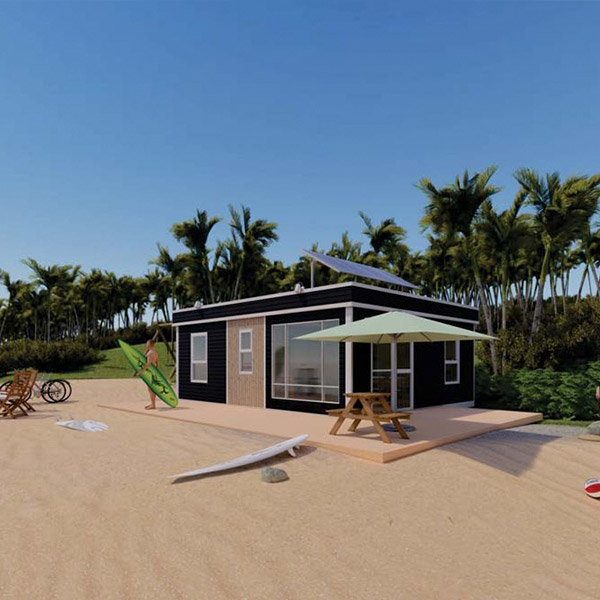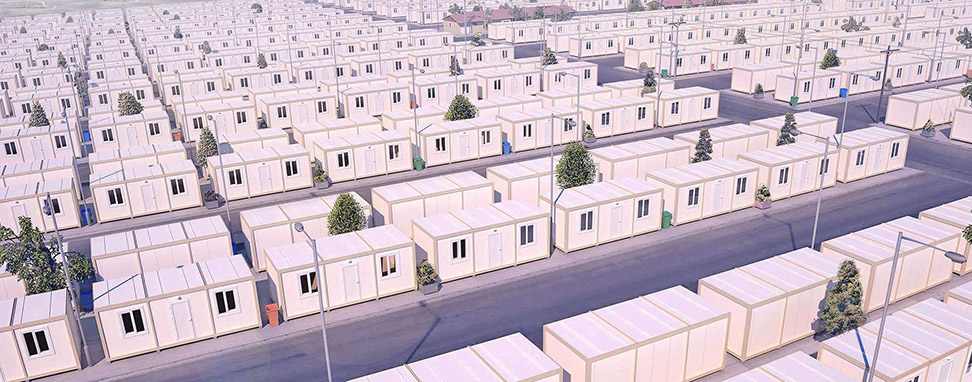In modern tourism and vacation culture, travelers' demand for accommodation is becoming more diversified and personalized. Vacation container house has become an innovative vacation accommodation option that has attracted much attention in recent years with its unique design concept, sustainable construction method and flexible application scenarios. Whether it is located on the seaside, in the forest, or in the foothills, container houses provide travelers with a unique vacation experience with their modular structure and modern style.
A vacation container house is a living space transformed from a standard shipping container. Through clever design and functional transformation, these containers have been given a new life and become comfortable, beautiful and environmentally friendly vacation homes. Compared with traditional buildings, container houses have higher flexibility and mobility, making them very suitable for tourist attractions or eco-resorts.
Container houses are mainly built with recycled second-hand containers, which reduces the generation of waste materials and effectively reduces the impact on the environment.

During the construction process, solar power generation, rainwater collection and energy-saving materials are usually used to achieve efficient use of resources.
Based on modular structure, container houses can freely combine multiple units to adapt to different living needs, such as single-person travel, family vacations and even large-scale team activities.
Its mobility allows it to be quickly deployed to different locations, such as beaches, mountains or grasslands, to meet travelers' preferences for unique geographical locations.
The interior design of container houses pursues modernity, and is usually equipped with functional spaces such as bedrooms, bathrooms, kitchens and terraces.
The large glass windows or skylights enhance natural lighting, allowing residents to fully experience the surrounding natural landscape.
Compared with traditional holiday homes, container houses have lower construction and maintenance costs and shorten construction periods, making them a cost-effective holiday option.
On the beach or coastline, the design of container houses can perfectly blend with the natural environment. The open terraces and panoramic windows allow residents to feel the sound of sea breeze and waves at any time.
Placing container houses in forests or mountains can provide a unique experience of coexistence with nature. The high durability and energy-saving design of the house enable it to cope with various climatic conditions.
Around the city, container houses can be used as micro-vacation homes, providing residents with a private space to escape the hustle and bustle of the city for a short time.
The mobility of container houses makes them an alternative to RVs, providing adventurous travelers with flexible and comfortable living spaces.
More and more container houses are adopting green technologies, such as solar power supply, smart home systems, and waste recycling systems, to achieve higher environmental protection goals.
Whether it is exterior painting, interior decoration or functional layout, container houses can be tailored to customers' needs to create a unique holiday experience.
In design, the integration of container houses with the surrounding environment is increasingly valued, such as hanging in the valley, hiding in the dense forest or floating on the lake, providing guests with an innovative experience of interacting with nature.
Some resorts have introduced container houses as the main building unit, supplemented by shared open-air restaurants, leisure areas and activity spaces to create a more social holiday experience.
The low carbon footprint and low damage to the natural environment of container houses make them an important part of ecotourism. In the future, it is expected to play a role in more nature reserves and ecotourism attractions.
In addition to holiday use, container houses can also provide fast and convenient living solutions in emergency resettlement after natural disasters while maintaining comfort and safety.
By introducing local cultural elements, such as traditional patterns, architectural styles or materials, container houses will further meet the cultural experience needs of global travelers.








